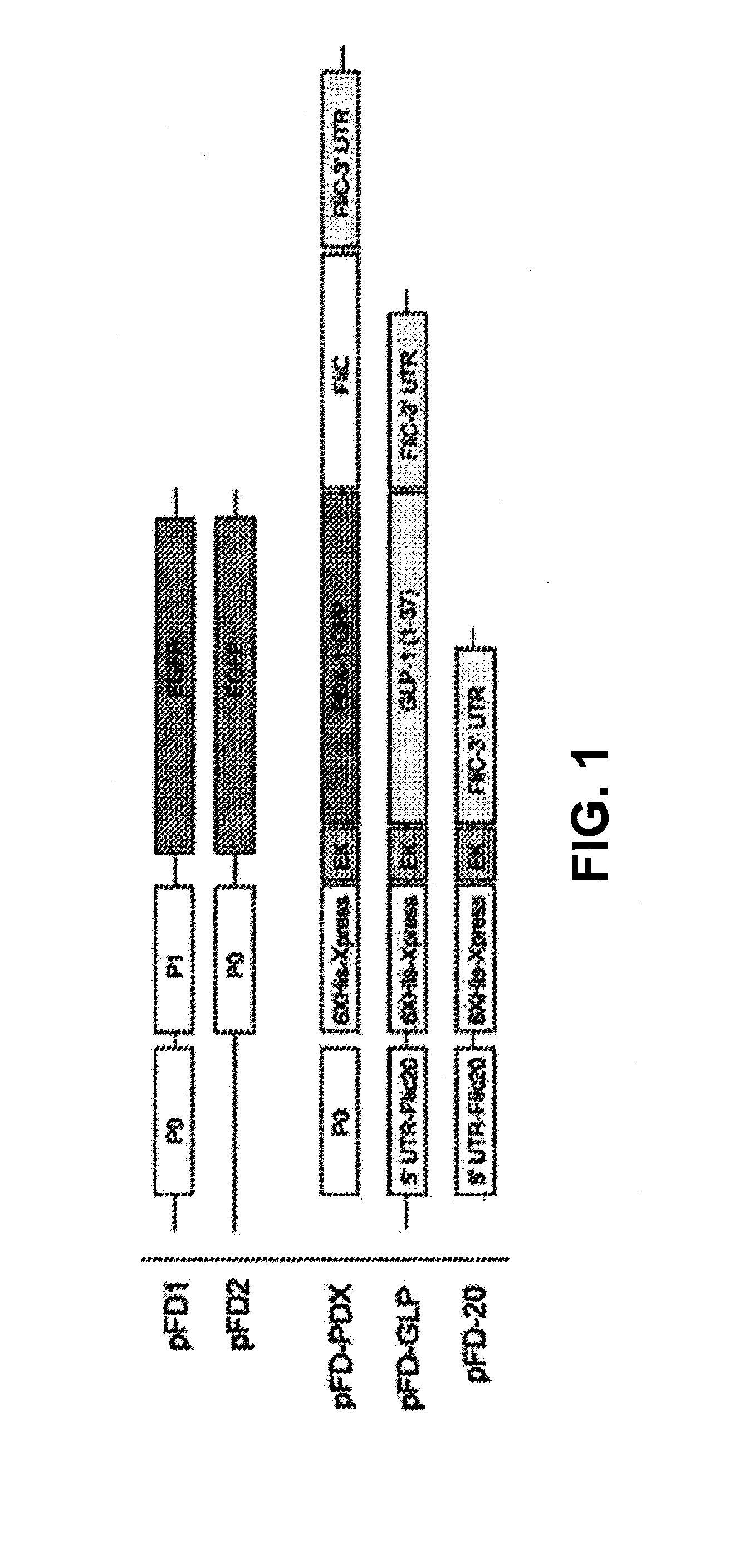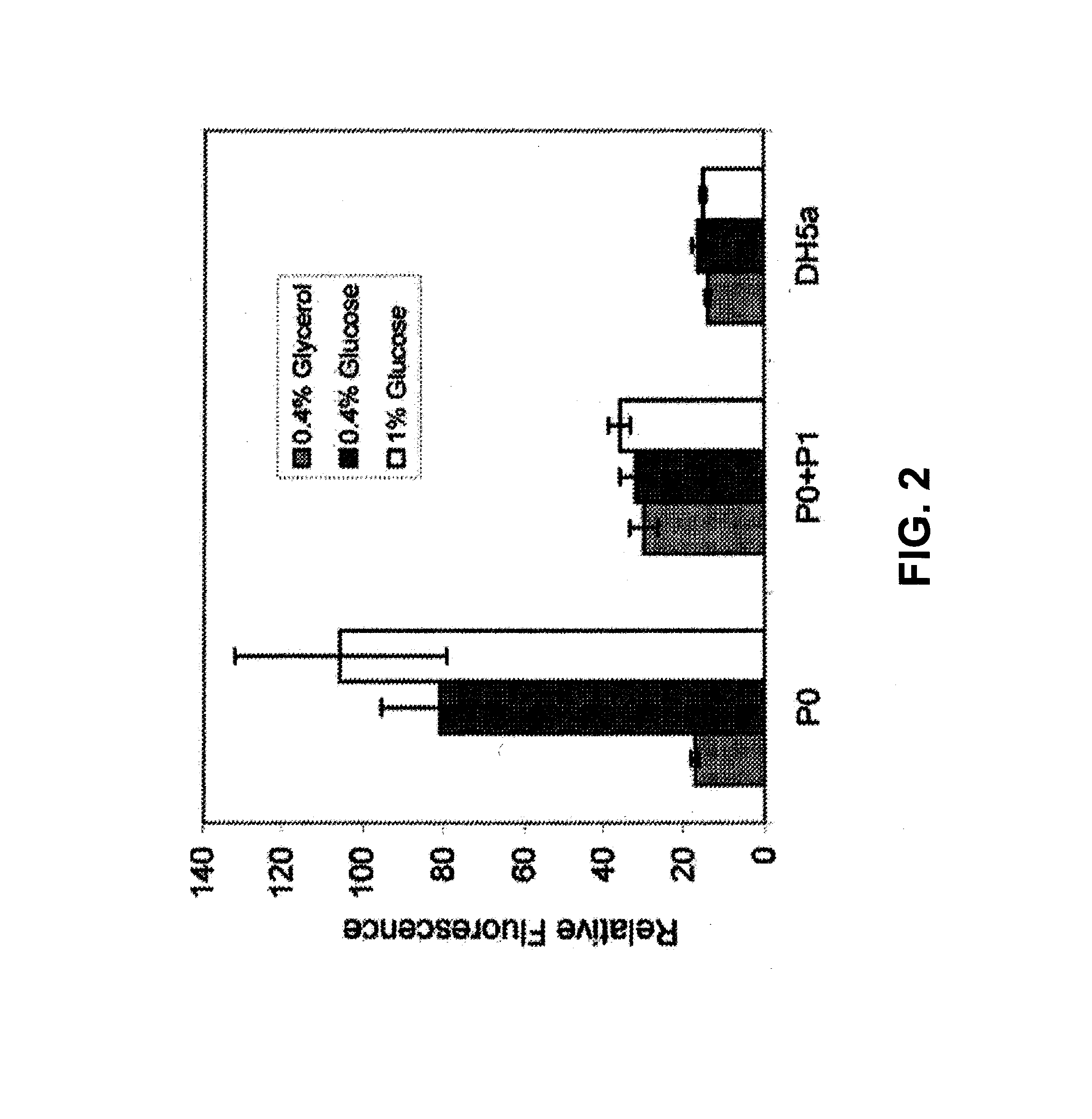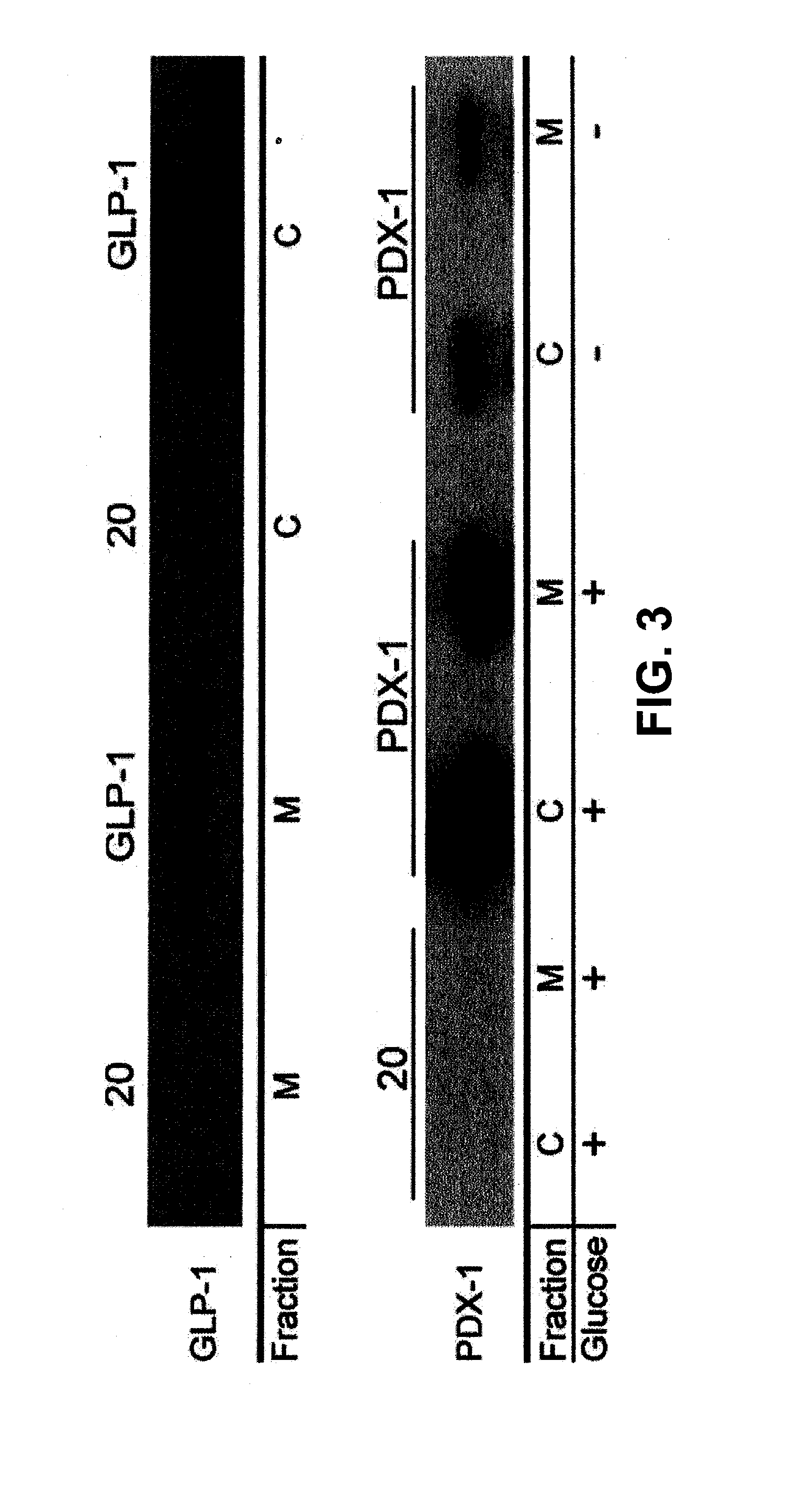Compositions and methods for treating endocrine, gastrointestinal or autoimmune disorders
a technology for autoimmune disorders and endocrine systems, applied in the direction of vectors, non-active genetic ingredients, dna/rna fragmentation, etc., can solve the problems of increasing public health problems, increasing the risk of complications of vascular diseases, and reducing the response of peripheral tissue to insulin, so as to reduce or eliminate the
- Summary
- Abstract
- Description
- Claims
- Application Information
AI Technical Summary
Benefits of technology
Problems solved by technology
Method used
Image
Examples
example 1
6.1. Example 1
Constitutive Expression of GLP-1 in Escherichia coli Nissle
[0188]This example demonstrates the constitutive expression of GLP-1 in Escherichia coli Nissle.
[0189]Plasmid construction: All cloning was performed-using techniques described previously (Sambrook, J. & Russell. D. W. Molecular cloning: a laboratory manual. Edn. 3rd., Cold Spring Harbor Laboratory Press, Cold Spring Harbor, N.Y.; 2001). FIG. 1 provides a schematic of plasmids used in this study. To study the P0 / P1 promoters from E. coli DH5α two plasmids were made (pFD 1 and pFD2). pFD 1 encoded the entire P0 / P1 region to drive the expression of enhanced green fluorescent protein (EGFP). pFD2 encoded only the P0 region of the promoter upstream from EGFP. To test the efficacy of insulinotropic protein secretion from recombinant bacteria for stimulating insulin secretion in Caco-2 cells, plasmids pFD-PDX, pFD-GLP. and pFD-20 were constructed as described herein. FIG. 2 shows P0 and P0 / P1 response to glucose. EGF...
example 2
6.2. Example 2
Engineering of E. Coli Nissle to Secrete GLP-1 or PDX-1-CPP
[0192]Escherichia coli Nissle 1917 (an over-the-counter probiotic strain, hereinafter referred to as Nissle) was engineered to secrete either GLP-1 (amino acids 1 through 37) under the control of the fliC promoter or PDX-1—CPP under the control of a glucose-responsive element. PDX-1 was secreted as a fusion with a cell-penetrating peptide (CPP) to facilitate rapid entry into the epithelia post-secretion. PDX-1 was secreted under the control of a glucose-responsive promoter element that had little observed leaky expression. Cells were grown for 6 to 8 h, normalized to an optical density at 600 nm of 1, and centrifuged. Western blots for secreted proteins GLP-1 (top blot) and PDX-1—CPP (bottom blot) in the Nissle supernatant and in the Nissle cell pellet are shown in FIG. 3. Referring to FIG. 3, the pellets were lysed, and the amount of each protein was determined (fraction “C”). The supernatant was preserved and...
example 3
6.3. Example 3
Induction of Insulin Secretion by E. coli Nissle Engineered to Secrete GLP-1 or PDX-1-CPP
[0193]This example demonstrates induction of insulin secretion by E. coli Nissle engineered to secrete GLP-1 or PDX-1-CPP.
[0194]To test if the engineered Nissle strains could induce insulin secretion in human epithelial cells, Caco-2 cells were cultured with cell-free medium (CFM) from overnight cultures of Nissle strains expressing PDX-1—CPP, GLP-1, or a 20-amino acid sequence tag as a negative control. The overnight cultures were grown in F-12K medium (Mediatech, Manassas, Va.) without glucose (with the exception of PDX-1 strains, which required glucose to produce PDX-1). Culturing of the Caco-2 cells in a 1:1 mixture of fresh F-12K medium without glucose and CFM from overnight cultures of Nissle secreting PDX-1—CPP (“P”), GLP-1 (“G”), a 20-amino-acid sequence tag (“20”), or a 1:1 combination of PDX-1—CPP CFM and GLP-1 CFM (“GP”) ran for 16 h before the medium was removed and the...
PUM
| Property | Measurement | Unit |
|---|---|---|
| Mass flow rate | aaaaa | aaaaa |
| Mass flow rate | aaaaa | aaaaa |
| Mass flow rate | aaaaa | aaaaa |
Abstract
Description
Claims
Application Information
 Login to View More
Login to View More - R&D
- Intellectual Property
- Life Sciences
- Materials
- Tech Scout
- Unparalleled Data Quality
- Higher Quality Content
- 60% Fewer Hallucinations
Browse by: Latest US Patents, China's latest patents, Technical Efficacy Thesaurus, Application Domain, Technology Topic, Popular Technical Reports.
© 2025 PatSnap. All rights reserved.Legal|Privacy policy|Modern Slavery Act Transparency Statement|Sitemap|About US| Contact US: help@patsnap.com



